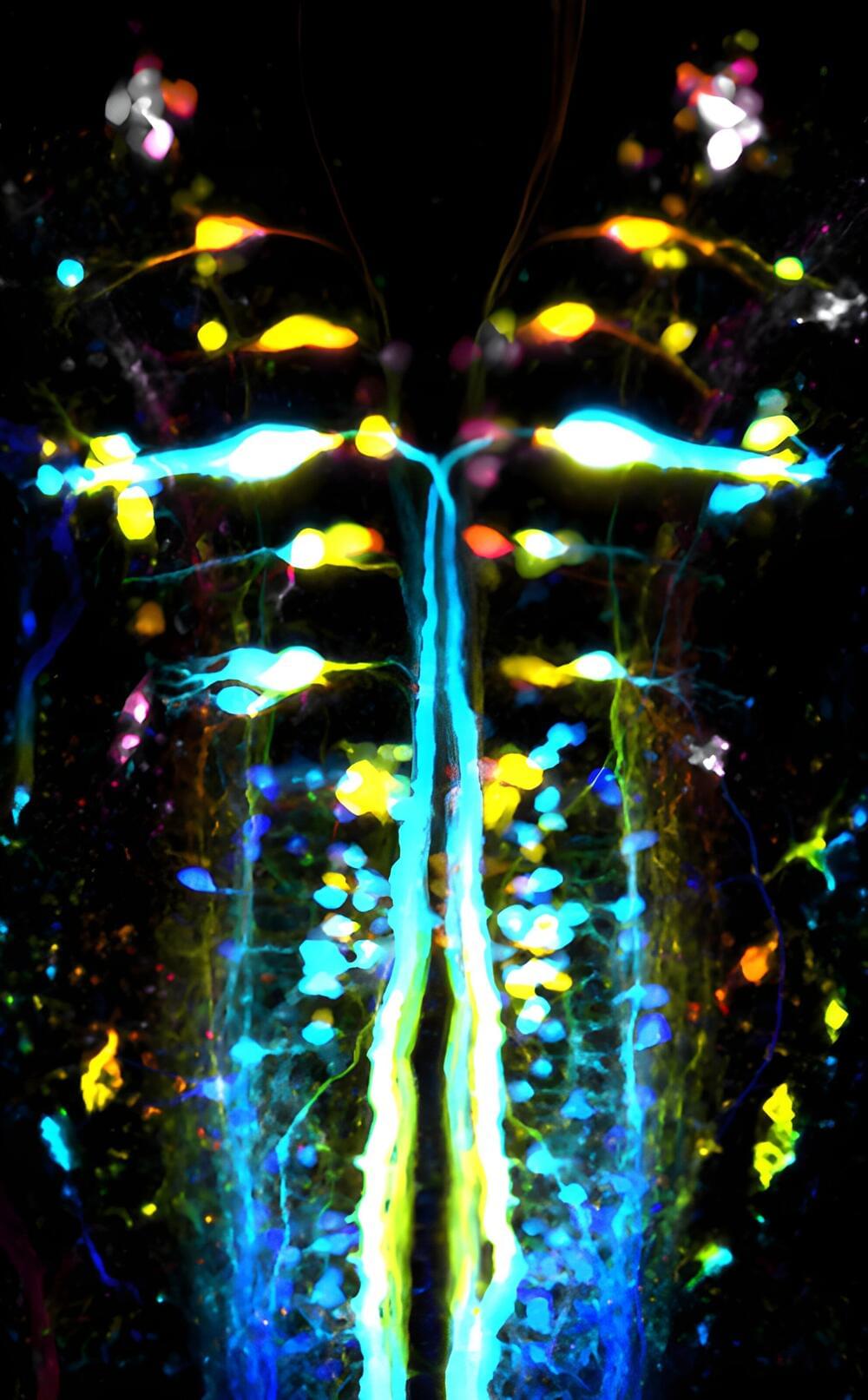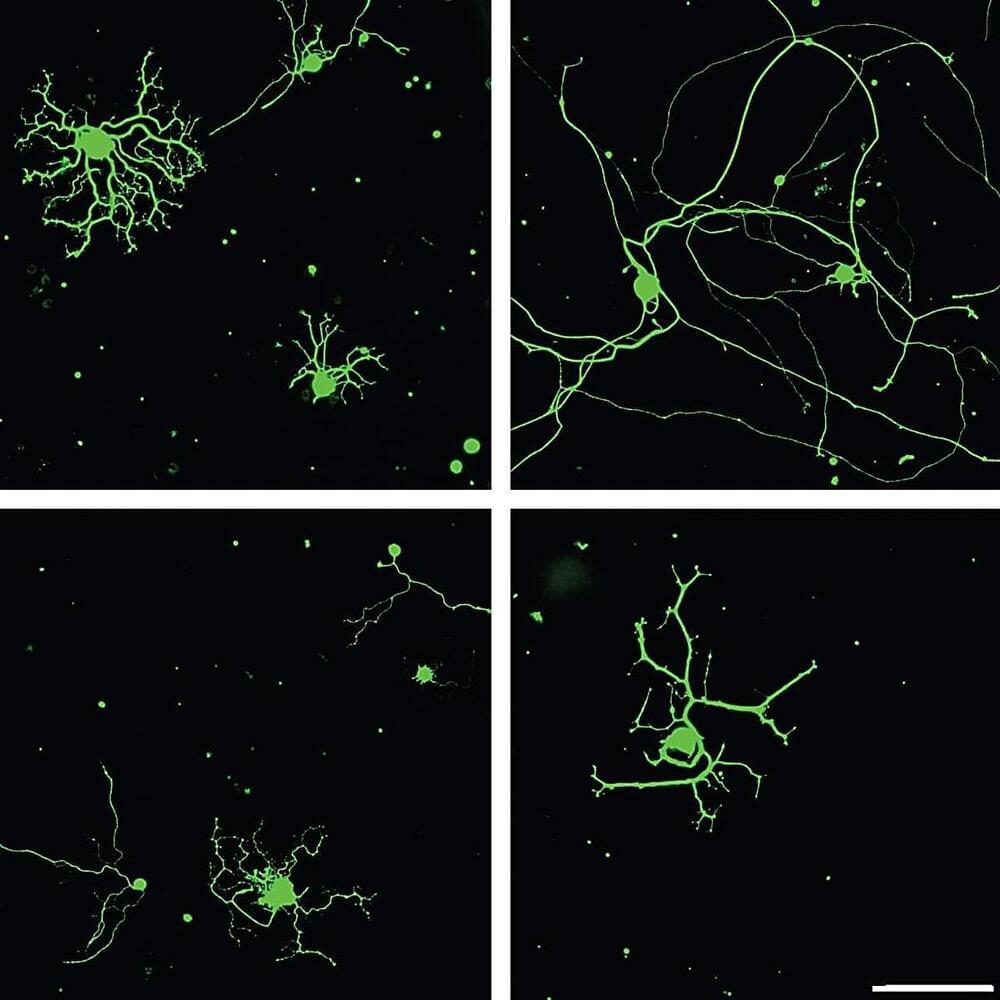A study of a genetic mouse model of schizophrenia supports two long-debated hypotheses, and unveils additional new clues about the biological roots of the disorder.



Abnormal levels of stress hormones such as adrenaline and cortisol are linked to a variety of mental health disorders, including depression and posttraumatic stress disorder (PTSD).
MIT researchers have now devised a way to remotely control the release of these hormones from the adrenal gland, using magnetic nanoparticles. This approach could help scientists to learn more about how hormone release influences mental health, and could eventually offer a new way to treat hormone-linked disorders, the researchers say.

Scientists from the University of Sydney and Fudan University have found human brain signals traveling across the outer layer of neural tissue that naturally arrange themselves to resemble swirling spirals.
Published in the journal Nature Human Behaviour, the study suggests that these widespread spiral patterns, seen during both rest and cognitive activity, play a role in organizing brain function and cognitive processes.
Senior author Associate Professor Pulin Gong, from the School of Physics in the Faculty of Science, said the discovery could have the potential to advance powerful computing machines inspired by the intricate workings of the human brain.

A new study reveals the brain circuit that controls sex drive in male mice. Scientists believe this finding could apply to humans and may allow them to manipulate the male libido.
Scientists at Stanford Medicine have identified the exact part of the brain that controls sex drive in mice. It is possible that the same part of the human brain also regulates libido in men.
“We’ve singled out a circuit in male mammals’ brains that controls sexual recognition, libido, and mating behavior and pleasure,” said Nirao Shah, one of the senior researchers and a professor of behavioral sciences at Stanford.

After a certain age, approximately 40% of people experience some degree of hearing loss. While age-related hearing loss is most prevalent in adults over the age of 65, it can start occurring far earlier than that, when people are in their 40s or 50s.
Despite their widespread use, existing diagnostic techniques might be unable to detect earlier signs of hearing loss, such as the loss of the ability to hear speech in crowded or noisy environments. Some researchers have thus been trying to devise viable techniques to detect subtler forms of hearing loss, so that they can be addressed early, before they are irreparable.
To this end, two neuroscientists at the Rotman Research Institute in Canada have recently been exploring the relationship between effortful listening and eye movements. Their most recent paper, published in The Journal of Neuroscience, suggests eye movements tend to decrease while young adults are placing greater effort in trying to hear speech.

Walking is a complex mechanism involving both automatic processes and conscious control. Its dysfunction can have multiple, sometimes extremely subtle causes, within the motor cortex, brain stem, spinal cord, or muscles. At Paris Brain Institute, Martin Carbo-Tano, Mathilde Lapoix, and their colleagues in the “Spinal Sensory Signaling” team, led by Claire Wyart (Inserm), have focused on a specific component of locomotion: forward propulsion.
In a study published in Nature Neuroscience, they show that it involves a region classically called the mesencephalic locomotor region, which controls the vigor and speed of movement and transmits the nervous message to the spinal cord via control neurons located in the brainstem.
This new mapping carried out in zebrafish corroborates recent studies in mice. It could eventually be extended to humans—helping to understand how movement control circuits can malfunction, in Parkinson’s disease notably.

Just like a gecko that regrows a broken tail, our peripheral nervous system knows how to regenerate the branches of its cells after an injury. Unfortunately, the cells in our central nervous system—our brain and spinal cord—are far more limited when it comes to regeneration.
Accordingly, diseases that lead to the degeneration and death of brain neurons, such as Alzheimer’s, Parkinson’s and ALS, are irreversible and incurable. So, what is it about the peripheral nervous system, which connects our brain and spinal cord to the other organs, that gives it the power to regenerate itself so readily?
In a new study, researchers at the Weizmann Institute of Science have discovered that a protein, previously known to be expressed only during embryonic development, plays a key role in regenerating adult neurons in the peripheral nervous system.

I’ve released my latest paper. Enjoy:
Abstract.
A common interpretation of wakeful, nondestructive mind uploading is that the person with the postoperative original body exclusively persists the preoperative identity and that the person with the upload’s body is some sort of identity copy. A frequent argument supporting this claim is that the preoperative person’s stream of consciousness attaches exclusively to the postoperative person with the original body. By implication, the person with the upload’s body spawns a new stream of consciousness, implying copy identity status. I argue that this is not the best metaphysical model of what happens in nondestructive uploading in the context of a stream of consciousness interpretation, and defend an alternative model which has generally received little attention in the existing literature: the branching identity model.

The research paper reviews the potential benefits of marine plasmalogens, a type of glycerophospholipid, in combating age-related diseases like Alzheimer’s and Parkinson’s. These compounds, abundant in marine resources, could improve lipid metabolism and reduce oxidative stress, offering a new avenue for improving the quality of life in aging populations.
